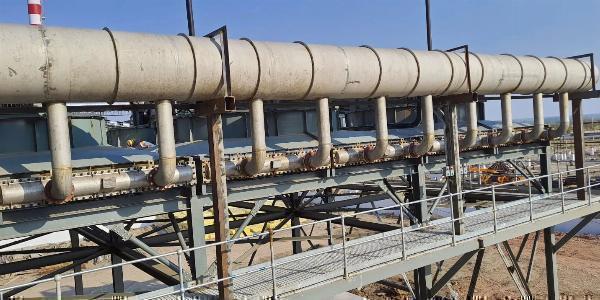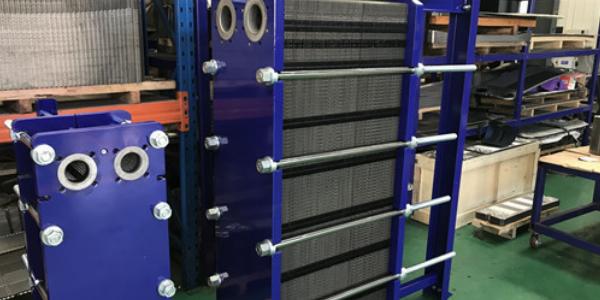Unlock Superior Heat Exchange Performance with Modern Plate Heat Exchangers

Strong 8k brings an ultra-HD IPTV experience to your living room and your pocket.
In the realm of heat transfer technology, plate heat exchanger stand out for their efficiency, versatility, and compact design. Whether you're managing industrial processes, optimizing HVAC systems, or improving energy efficiency in various applications, understanding how modern plate heat exchangers work can unlock superior performance and lead to significant operational benefits. In this comprehensive guide, we'll explore the advantages of plate heat exchangers, their applications, and why they are a preferred choice for many industries.
What is a Plate Heat Exchanger?
A plate heat exchanger is a device that facilitates the transfer of heat between two fluids using a series of thin, specially designed plates. These plates are arranged in a stack, creating multiple channels through which the fluids flow. The key advantage of this design is the increased surface area for heat transfer, which enhances the efficiency of the process compared to traditional heat exchangers.
Key Components
Plates: The primary component of a plate heat exchanger, these are typically made from stainless steel or other corrosion-resistant materials. The plates have a pattern of channels that allow the fluids to flow over a large surface area.
Gaskets: These are used to seal the plates and prevent leakage of fluids. They are made from materials that can withstand the operating temperatures and pressures.
Frame: The frame holds the plates together and allows for the assembly and disassembly of the unit. It is usually constructed from durable materials such as steel.
Advantages of Modern Plate Heat Exchangers
1. High Thermal Efficiency
One of the primary benefits of plate heat exchangers is their high thermal efficiency. The design of the plates allows for a large surface area within a compact footprint, leading to effective heat transfer between the fluids. This high efficiency translates to better performance in both heating and cooling applications, making them ideal for industries with high thermal demands.
2. Compact and Space-Efficient
Unlike traditional shell-and-tube heat exchangers, plate heat exchangers are much more compact. Their design allows for a significant surface area to be contained within a small footprint. This compactness makes them an excellent choice for applications where space is limited, such as in residential and commercial HVAC systems.
3. Flexible and Scalable
Modern plate heat exchangers are highly flexible and scalable. They can be easily customized to meet the specific needs of different applications. The number of plates can be adjusted to increase or decrease the capacity of the heat exchanger, making it a versatile solution for varying thermal loads.
4. Easy Maintenance and Cleaning
Maintenance is straightforward with plate heat exchangers. The unit can be disassembled for cleaning or repairs, which is particularly useful in applications where fouling or scaling is a concern. The ability to access and clean individual plates ensures that the heat exchanger continues to operate efficiently over its lifespan.
5. Energy Savings
By optimizing heat transfer, plate heat exchangers contribute to energy savings. Improved efficiency means that less energy is required to achieve the desired temperature changes, which can lead to lower operational costs. This is particularly beneficial in energy-intensive industries and facilities looking to reduce their carbon footprint.
Applications of Plate Heat Exchangers
1. HVAC Systems
In HVAC systems, plate heat exchangers are used for both heating and cooling applications. They can be found in air handling units, chillers, and heat recovery systems. Their efficiency and compact size make them ideal for integrating into various HVAC setups.
2. Industrial Processes
Many industrial processes require precise temperature control and efficient heat transfer. Plate heat exchangers are used in industries such as chemical processing, food and beverage, pharmaceuticals, and petrochemicals. Their ability to handle high pressures and temperatures makes them suitable for demanding industrial environments.
3. Energy Recovery
Plate heat exchangers are widely used in energy recovery systems. By capturing and reusing waste heat from industrial processes or exhaust gases, these heat exchangers help improve overall energy efficiency and reduce operational costs.
4. Marine Applications
In the marine industry, plate heat exchangers are used for cooling engines and other critical systems. Their compact design and ability to handle seawater make them a popular choice for maritime applications.
How to Choose the Right Plate Heat Exchanger
Selecting the right plate heat exchanger involves several considerations:
Heat Transfer Requirements: Assess the thermal load and the temperature ranges of the fluids to determine the appropriate size and capacity of the heat exchanger.
Fluid Compatibility: Ensure that the materials used in the heat exchanger are compatible with the fluids being processed. This is crucial for preventing corrosion and ensuring longevity.
Pressure and Temperature Ratings: Verify that the heat exchanger can handle the operating pressures and temperatures of your application.
Maintenance Needs: Consider the ease of maintenance and cleaning when selecting a heat exchanger. Units that are easy to disassemble will save time and effort in the long run.
Conclusion
Modern plate heat exchangers offer a range of benefits, including high thermal efficiency, compact size, and flexibility. Their ability to enhance heat transfer in various applications makes them a valuable component in both industrial and residential systems. By understanding the advantages and applications of plate heat exchangers, you can make informed decisions to optimize your heat transfer products and achieve superior performance in your operations.
Note: IndiBlogHub features both user-submitted and editorial content. We do not verify third-party contributions. Read our Disclaimer and Privacy Policyfor details.



